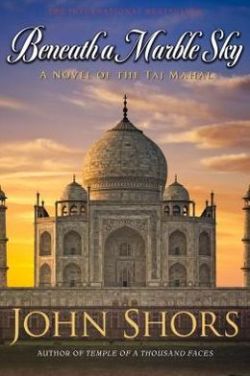The depiction of a teardrop falling from the heavens serves as the architectural centerpiece for the world’s legendary mausoleum, the Taj Mahal. Well documented is the history – and many a fable – at the center of its construction. During the earlier part of the 17th century, the queen of the Mughal Empire (what is now India) died in the process of childbirth. The emperor became so grief stricken that he diverted his attention from ruling and to the commissioning & building of his beloved’s final resting place. It took over two decades to complete the marbled and heavily jeweled crypt that today, is designated as one of the Wonders of the Modern World. Throughout that same time period however, it is said that the emperor remained in mourning and lost the will to rule. In turn, he was overthrown by one of his sons and imprisoned in a room with its only view being that of the Taj Mahal. Treachery, greed, and war mongering ensued during the emperor’s imprisonment destroying whatever peace he had been able to maintain throughout his kingdom. With the death of the woman he deeply loved, so did ruin befall his empire.
From this premise – whether part real, part fabrication – John Shors writes “Beneath a Marble Sky” as a work of historical fiction. Shors pieces together tales passed down over time on the making of the Taj Mahal with facts from the era of the Mughal Empire in order to tell what is ultimately, a love story. Princess Jahanara, the daughter of the queen buried in the Taj Mahal, functions as the novel’s narrator. She tells of the devotion between her parents, of her brothers at odds with each other over the throne, and of the cruel dismantling of her family – along with her father’s kingdom – at the hands of a son blinded by power. Elements of loyalty, religious and cultural adherence, liberties and restrictions based on social status or gender, forbidden relationships, and the methods of war are all folded into this tale that takes place centuries ago and under a Muslim/Hindu co-existence. At times peaceful, at times in conflict, but seemingly never without tension. As such, the Taj Mahal does not take center stage in “Beneath a Marble Sky” but more so the history – and suffering – of the people surrounding its creation.
In true literary form, Shors’ use of the first person narrator as an unreliable one provides him with the proper tool to collapse fact with fiction and clearly blur the line between the two. The author names the characters in the novel with the actual names of the Mughal Empire’s ruling members. Sometimes they are used to depict the characters accurately while other times they are used symbolically. The ruler known as Akbar “the Great” is represented as a mighty falcon that provides much solace to Princess Jahanara and her father while both are imprisoned in a tower. According to legend, an incestuous relationship developed between the Princess and her father during that time merely because Jahanara greatly resembled her mother. The rumor is alluded to by a character in the novel and which Princess Jahanara denies. The exchange serves as an example that a denial from a first person narrator is just as unreliable as the rumor itself. There really is no way of knowing the truth. It’s the kind of “stuff” that also makes Memoirs unreliable.
“Beneath a Marble Sky” is a page turner, quick read, and a novel for the curious of another time and place. After reading “Beneath a Marble Sky,” I leafed through a history book in order to learn a bit more about India’s past and how events that took place during the Mughal Empire shape India today. If ever I have the opportunity to visit the Taj Mahal, I can do so now with a deeper understanding not only of the mausoleum itself, but of the people and their struggles during the time period that it was built. For that, I can forgive parts of the narrative where the reader must suspend disbelief – of which there are several passages – but not difficult to put aside given the telling of one fascinating story.
Next read – The Light Between Oceans by M.L. Stedman
